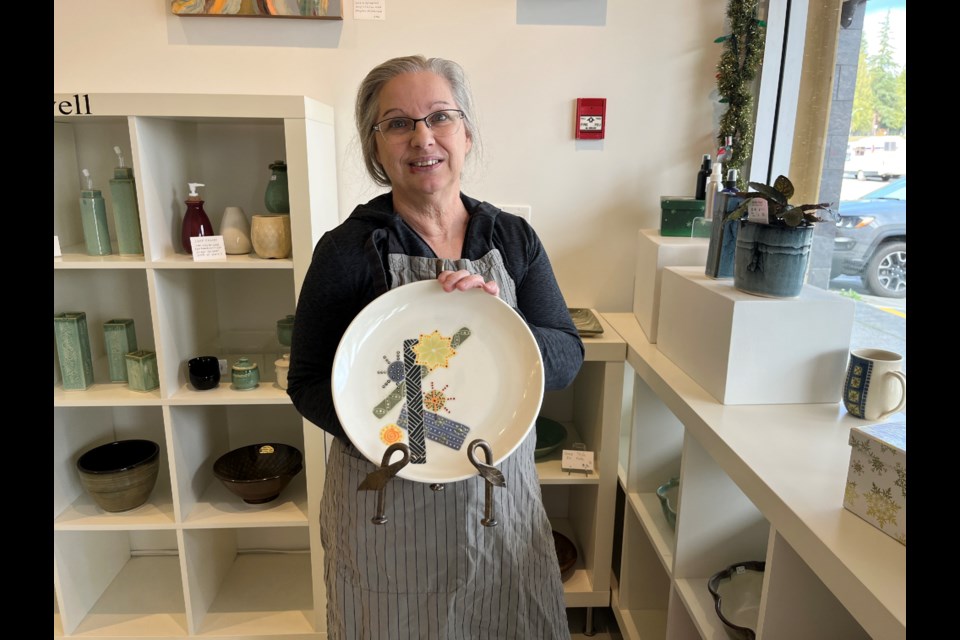Self-taught potter Darlene Calwell grew up north of town and, as a result, became accustomed to the stunning sunsets provided to those living close to the water.
Calwell connected with Powell River Fine Arts Association (PRFAA) and for many years was department head. PRFAA mentors artists and artisans in the qathet region in their chosen art form, such as pottery, weaving and painting. At that point Calwell lived and worked from her home studio in Wildwood, and was a part of the Artique artists cooperative when it was located in the Great Balls of Wool location on Marine Avenue.
Eventually Calwell decided that she needed to move on.
“It was either go big or quit,” said Calwell. “I was working from home and it wasn’t working for me.”
Calwell eventually found the space that is now Dancing Tree Gallery, located in Crossroads Village on Joyce Avenue.
“This summer was 10 years; we made it,” said Calwell.
A business that survives the 10-year mark is usually considered a success, given how difficult it can be for a small business owner in general.
“I walked in [the now Dancing Tree space] with three bins of my pottery,” said Calwell, remembering what it was like to move into her new work/art space a decade ago.
Her next step was to move back to town (Westview area) so she could enjoy the sunsets once again, which eventually she did.
Dancing Tree is long and narrow, with nothing in the middle to distract, and feels like a gallery.
“All I wanted to do was have a few spaces for others to help pay the rent and then my studio is here,” said Calwell. “Having a space for your studio is expensive, even if it’s in your house.”
Currently eight artists share the space, including long-term tenant Meghan Hildebrand. Right now Calwell is gearing up for the winter season, however, every season is busy for her.
“Making pottery is a dedicated process,” said Calwell. “Pottery is not something you can do for a few hours once a week, the commitment to do it, to get there [to a finished piece] takes a very long time.”
Calwell said a cycle of pottery takes about two weeks from start to finish. She doesn’t just make one or two mugs at a time but many sets at a time.
“It’s a different medium from other art forms altogether,” said Calwell. “If they [patrons] understand what goes into making homemade pottery and appreciate it, they are willing to pay for it.”
Calwell considers pottery as more of a craftsmanship than an art form.
“I don’t consider myself an artist; I consider myself a potter, but now I have been painting a bit more,” she added.
Her mugs, which are well-known in the qathet region, are handcrafted and hand-painted with original designs.
“What I like about pottery is I can make something useful, for every day, and then I can make something that is just artistic,” said Calwell. “The fact that people appreciate what they are drinking out of is satisfying.”
She thinks it's funny that people, including her, become attached to their mug, whether to drink their daily coffee or tea; it’s part of a ritual.
The process to make one mug is humbling to the layperson who only sees the finished piece. Throwing, glazing, drying, bisque firing and then ending up in the kiln fire is a timely endeavour.
“When I’m in my studio, that's my space,” said Calwell. “I do what I love, I control my days. I’m a morning person, so I’m here early. I get a lot of conversation here, I like that part, I’m an introvert, so here [Dancing Tree] is where I am social; at home I like quiet.”
Join the Peak’s email list for the top headlines right in your inbox Monday to Friday.




